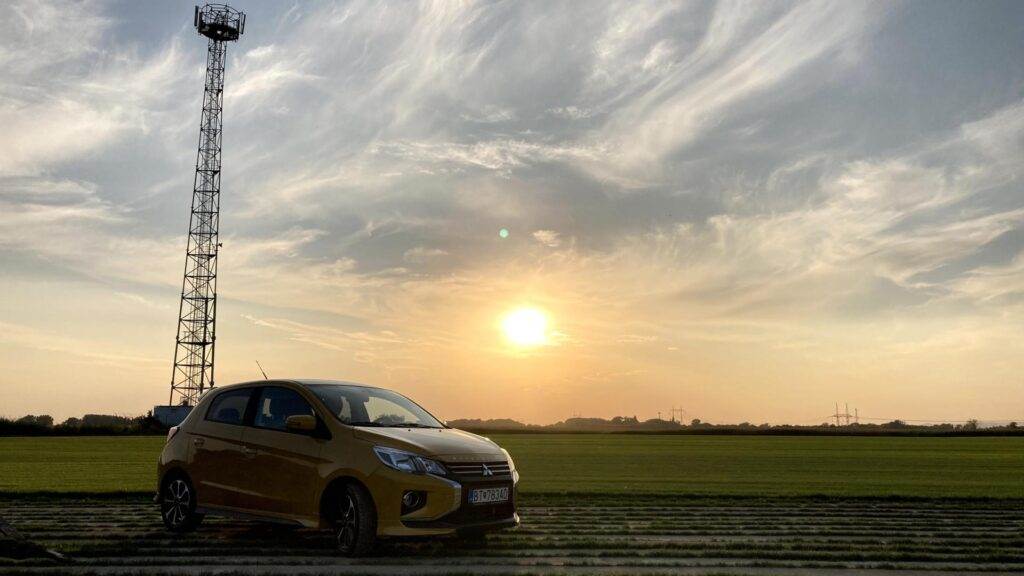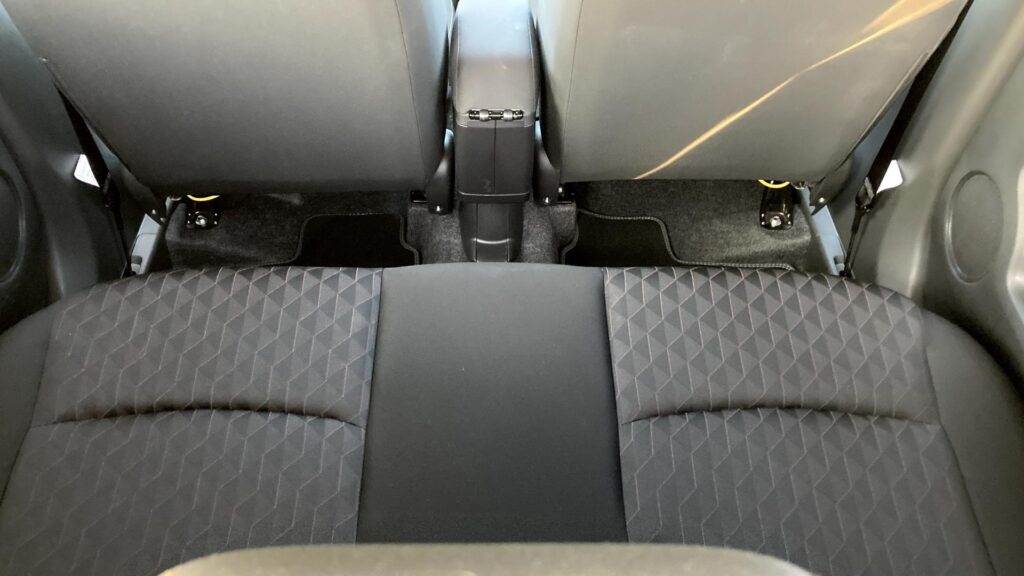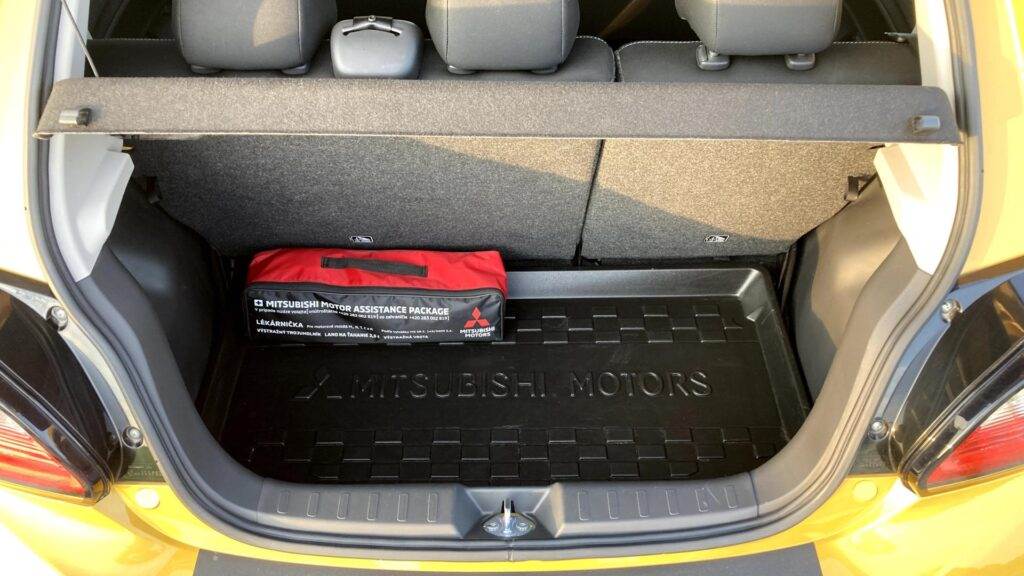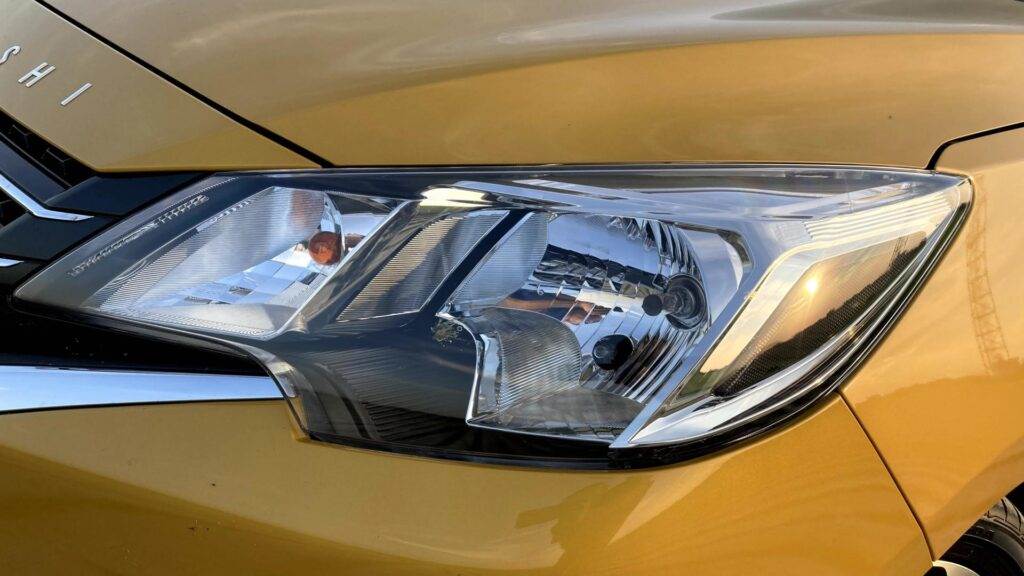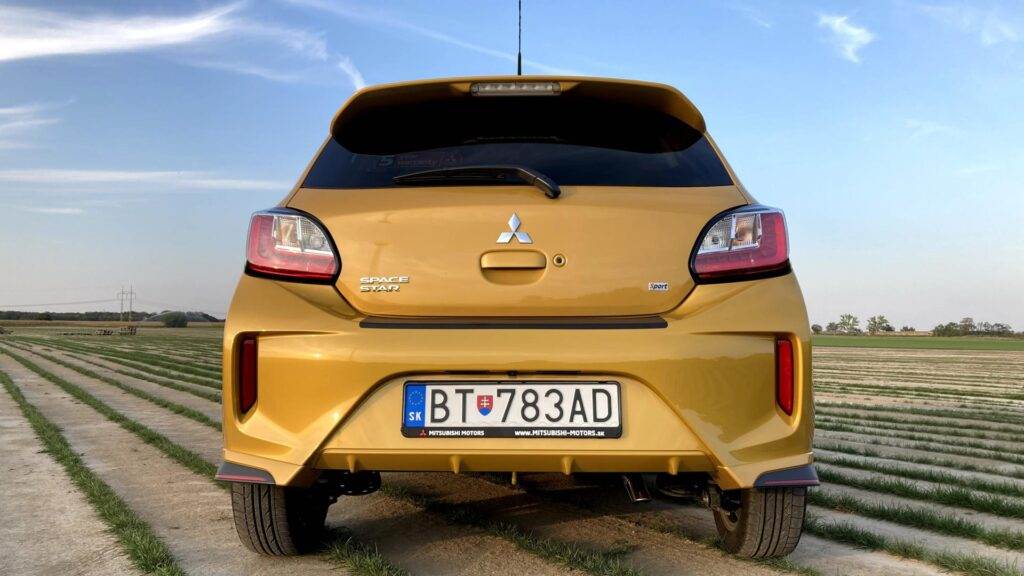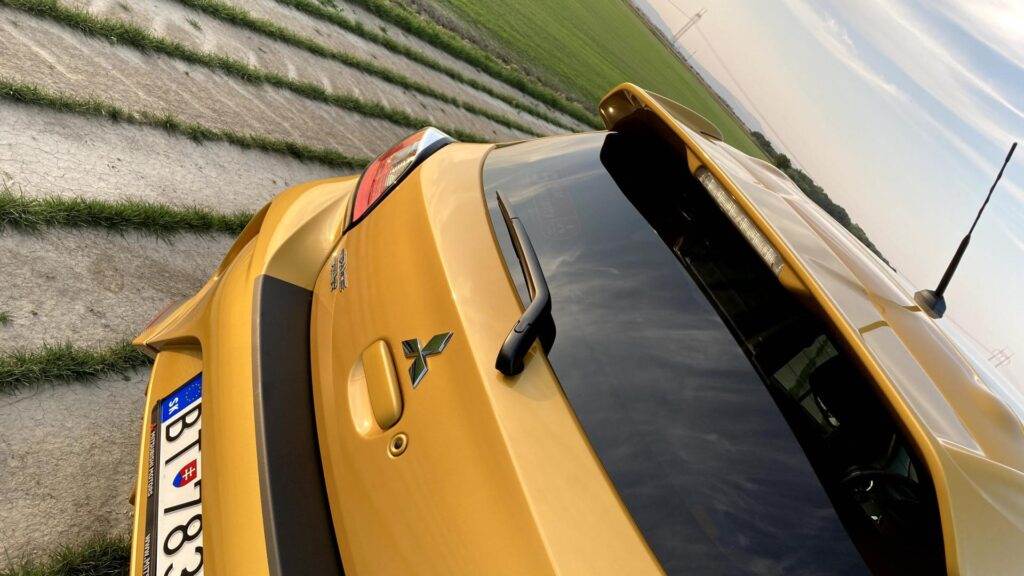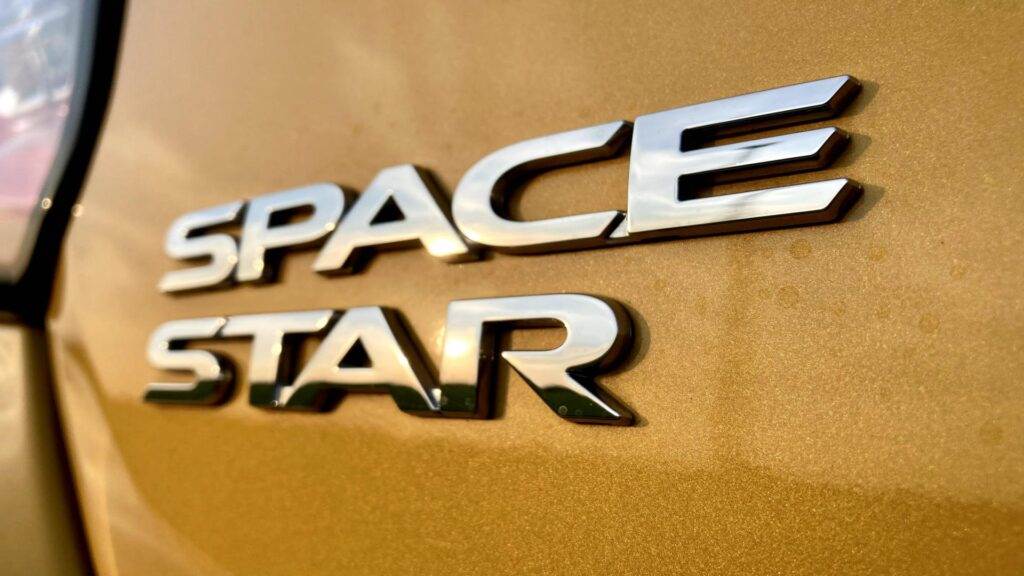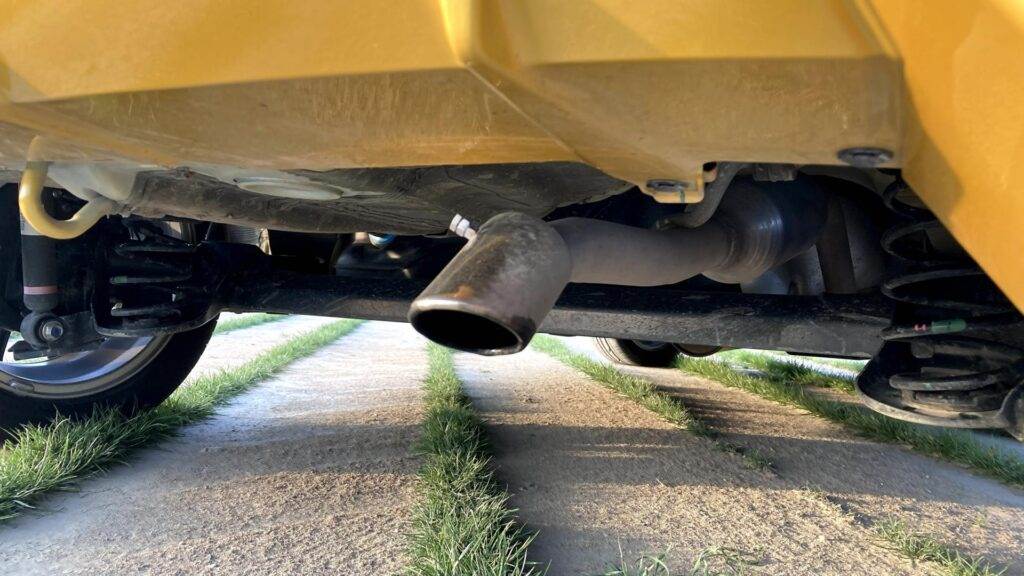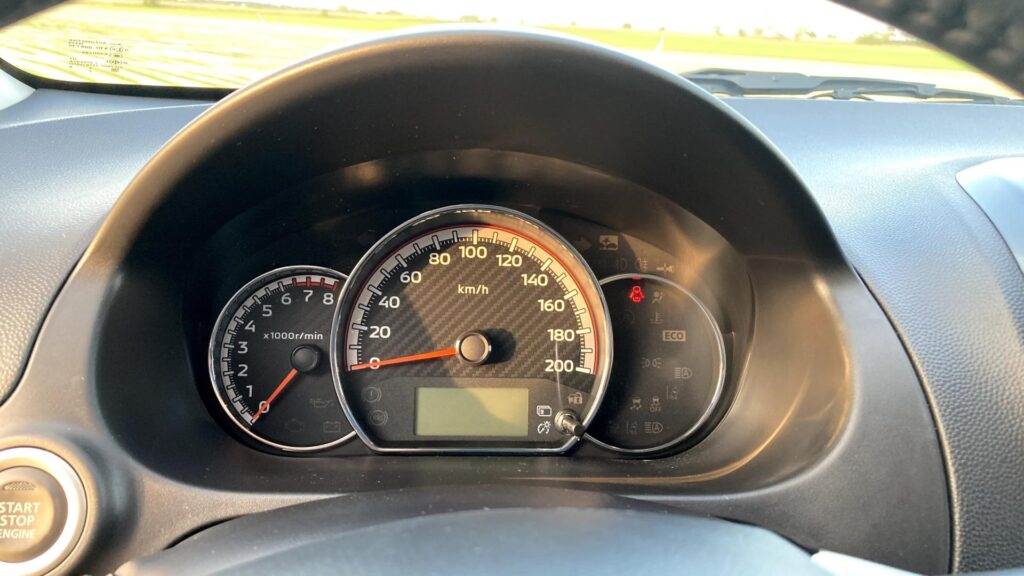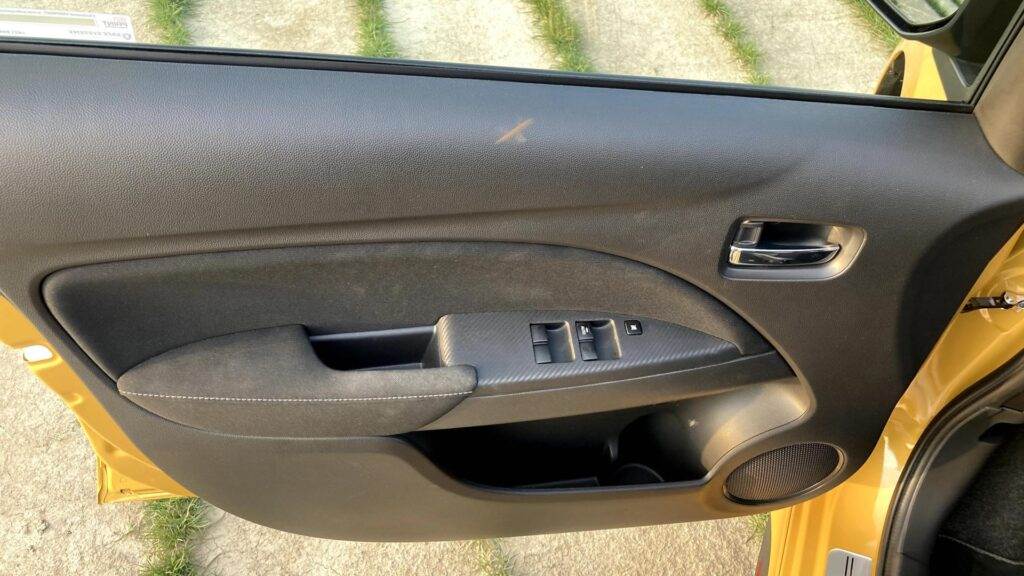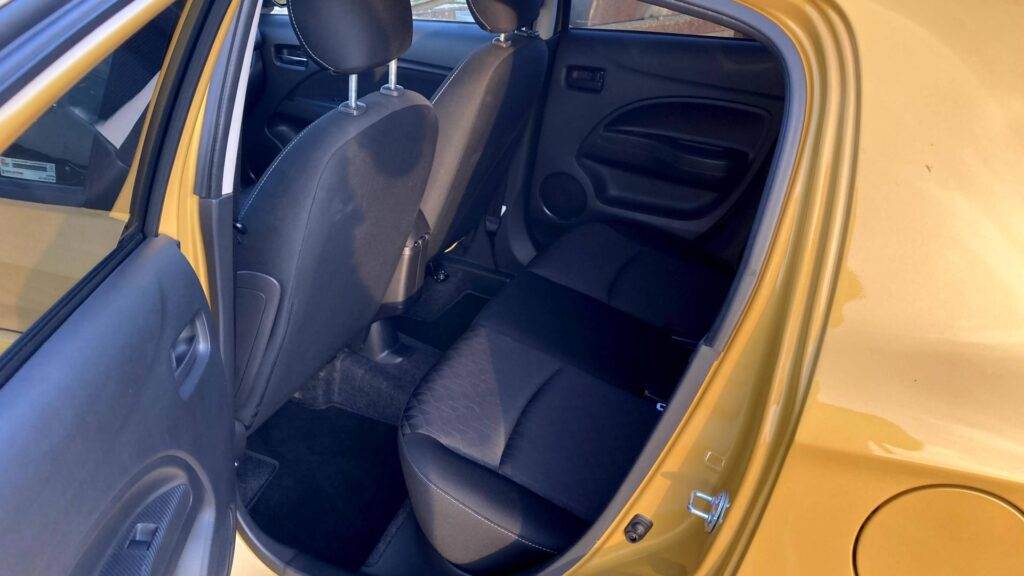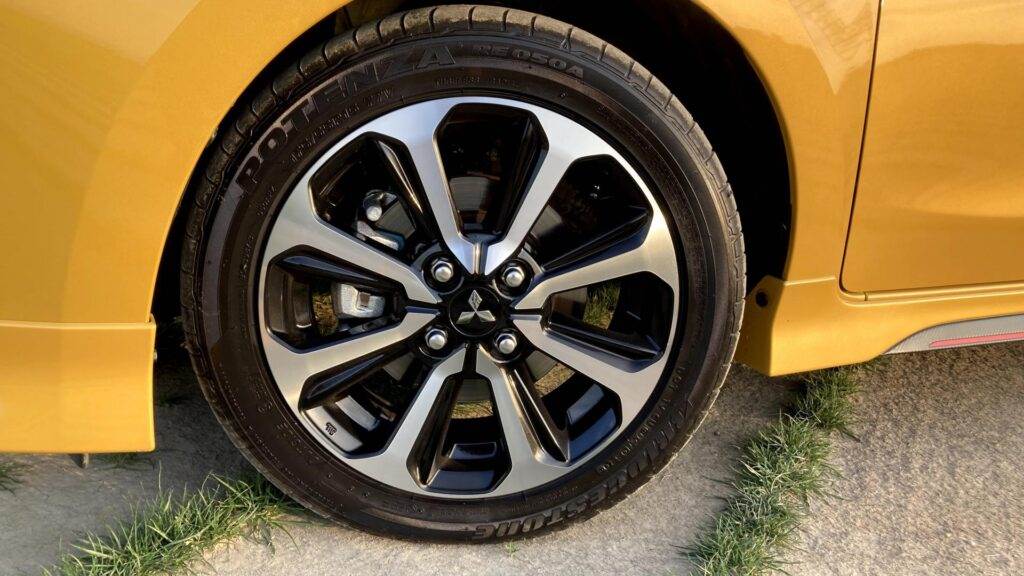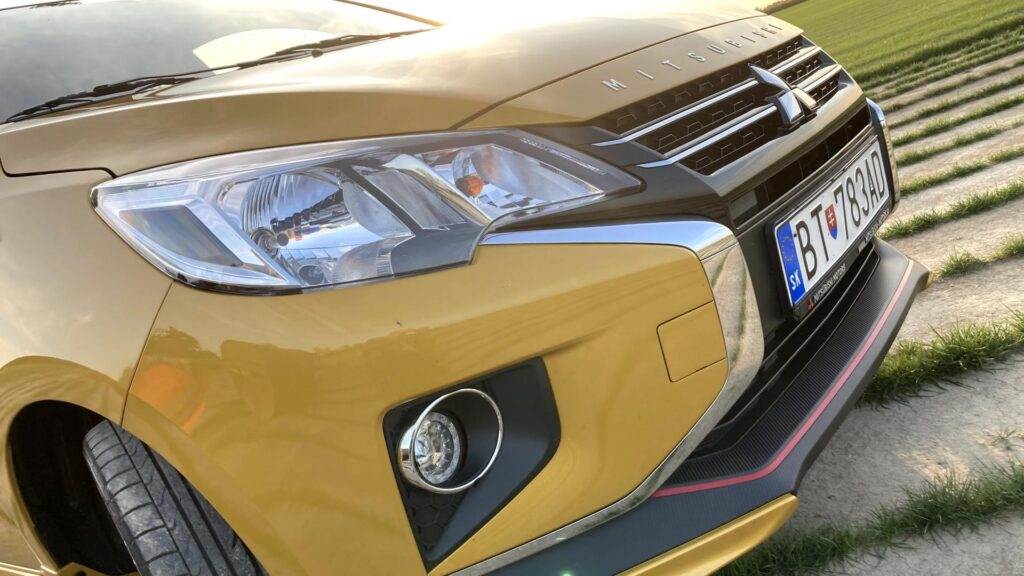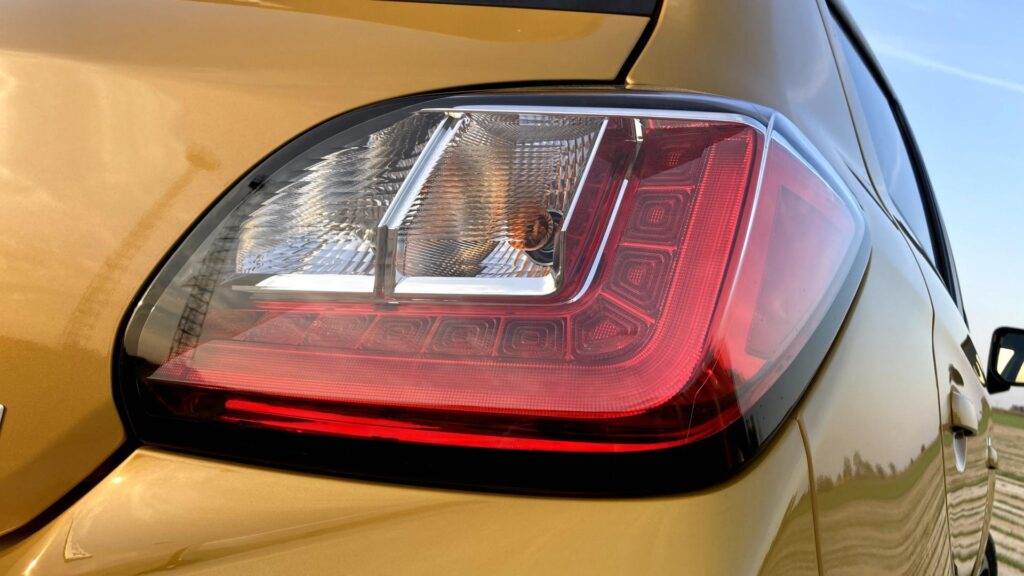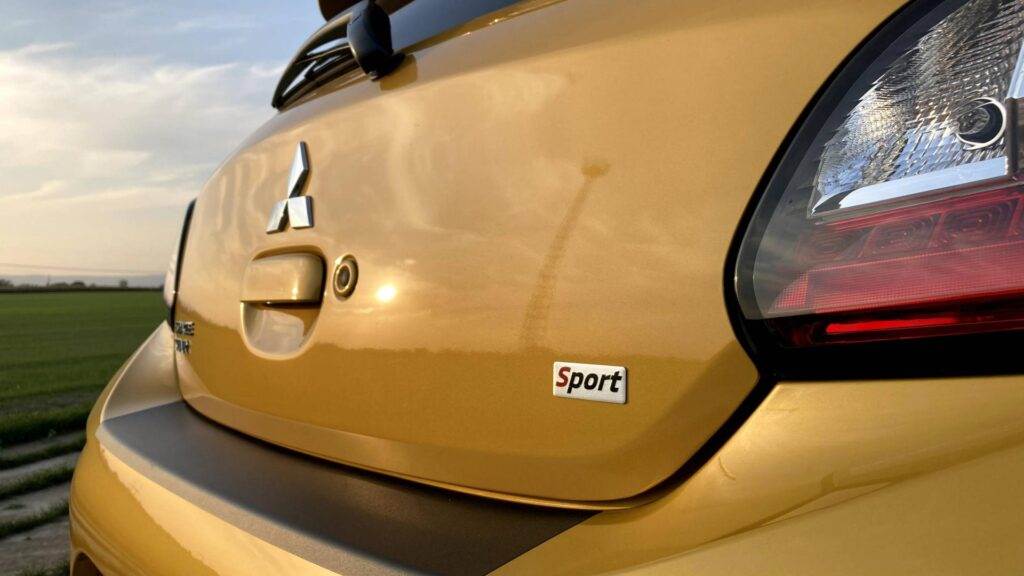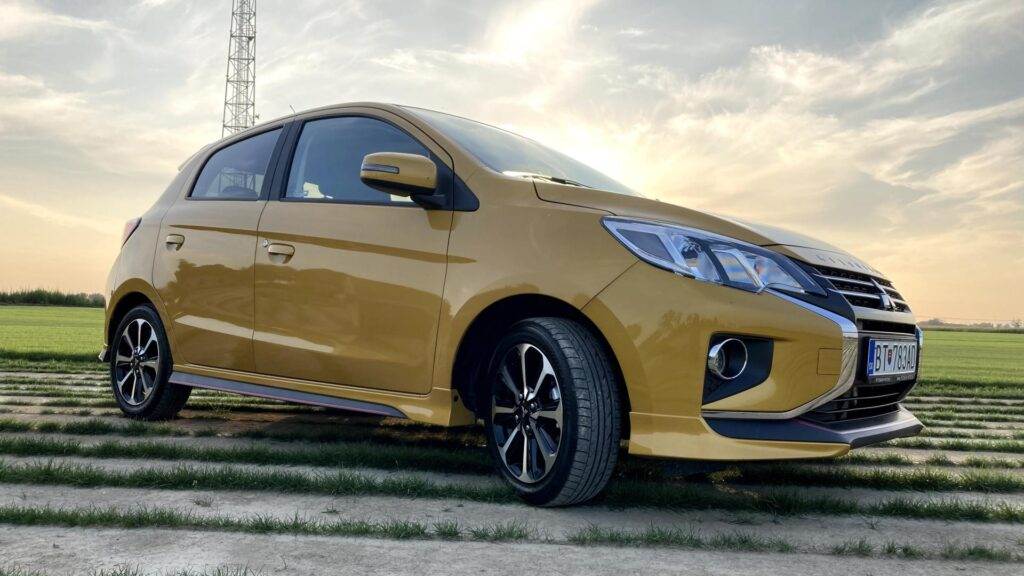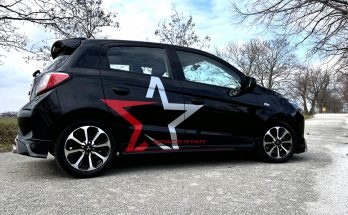After its second facelift, the small Mitsubishi Space Star, also known in the world as Mirage, bet on a dynamic design, practical functional equipment without a large share of electronics, classic engines and a very good price. Does the Japanese representative of the small car segment have any major flaws?
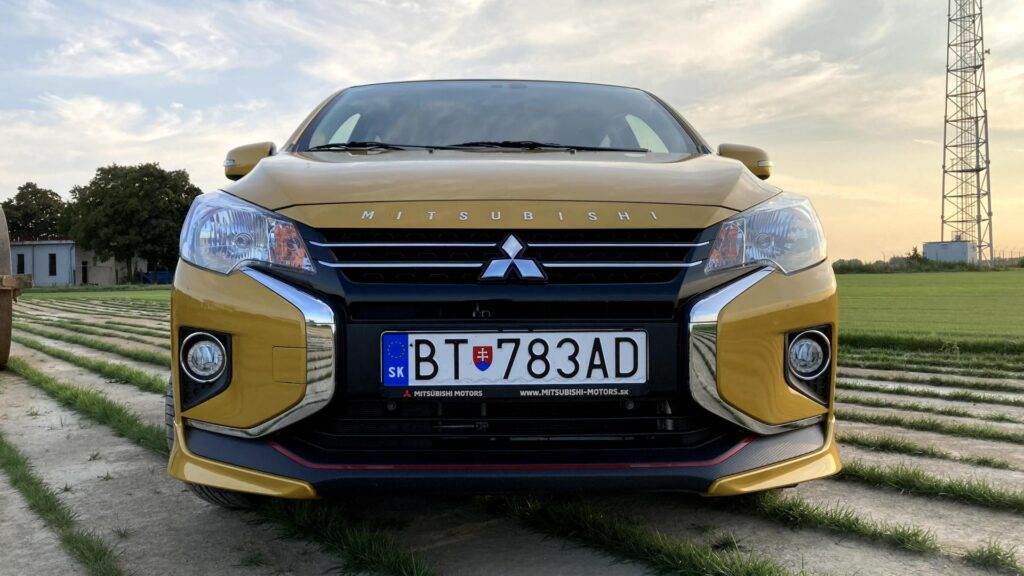
Sales of the Space Star model since its premiere in March 2012 reached 653,065 vehicles. Modernization in the current year 2020 brought relatively fundamental changes to the body design. The Mitsubishi Space Star finally got rid of the unsightly rounded shapes that were in fashion a decade ago and replaced them with sharply cut features that look sporty and mainly fit into the design signature of the brand’s current models. The designers really won with the exterior and the result is a very attractive small hatchback at first glance.
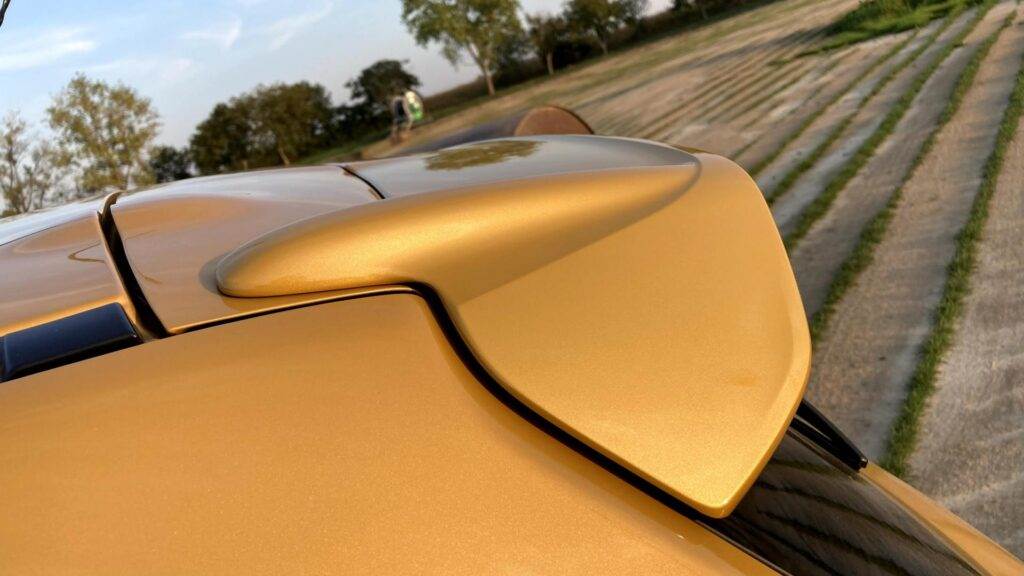
For example, the appearance of the radiator grille and front bumpers in the “Dynamic Shield” style has been changed. Front and rear headlights can be newly diode. In addition, Mitsubishi also introduced brand new 15″ wheels and a new yellow body color. The piece we tested was in this beautiful, mustard yellow color. It was dressed in a dynamically tuned Sport package, which includes, for example, extended front and rear bumpers or a “carbon lollipop”. The side part of the vehicle was then enriched by this package with sporty door sill trims, and on the rear part we can find a black protective foil of the bumper and a chrome exhaust tip. However, the massive rear spoiler is standard.
You will certainly find here also small things that someone will not just forgive the car. This is, for example, an unaesthetically built-in door and trunk lock, handles that open upwards, or light and rain sensors glued next to the central rear-view mirror. But hands down, when looking for a cheap city car, these details will probably be stolen from you…
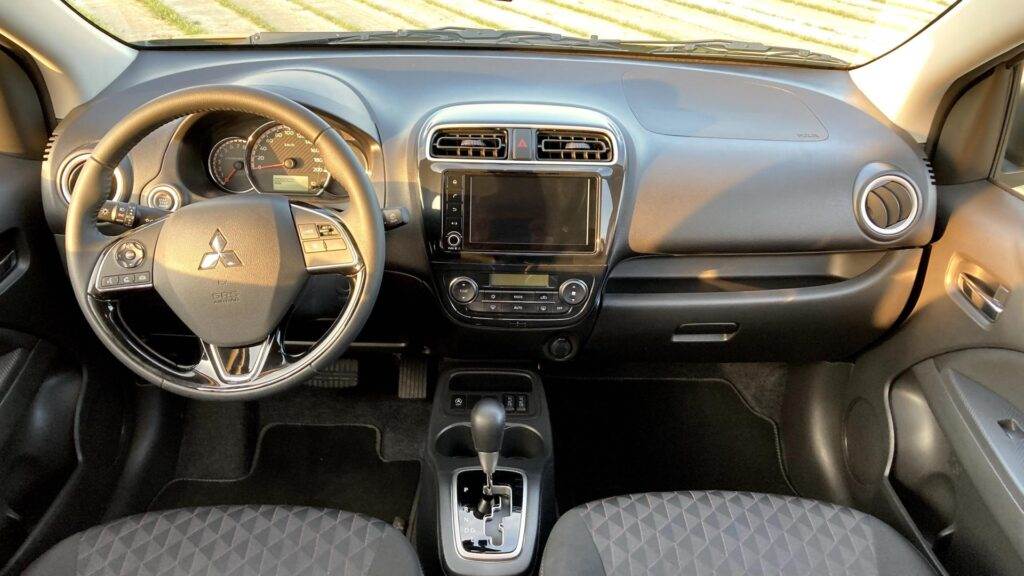
However, the interior of the cabin impresses with its great airiness. After all, we are talking about a vehicle belonging to the same category, which also includes Skoda Citigo or Hyundai i10 , so the interior space pleasantly surprised us. There are now four equipment levels available instead of three – Inform, Inform +, Invite and Intense. In the higher trims, the higher quality materials and also a larger and more intuitive multimedia system with a 7-inch screen, which also supports the Apple CarPlay and Android Auto mobile interfaces, will please you. There is also a DAB digital tuner and better maneuverability when parking, thanks to the rear parking camera.
Although the Mitsubishi Space Star is a small car, we felt very airy behind its wheel. And this despite the fact that its interior width is rather below average for a small hatchback. The feeling of airiness is helped by the large distance between the head and the ceiling, and also, apparently, the shaping of the instrument panel and the central column, which allow the driver to get close to the steering wheel – without the extended knees getting in the way. Even in terms of height, there is nothing to complain about. There are significantly worse small hatchbacks with rear seat headroom. Seating is a bit cramped in the outermost seats of the second row, but it’s nothing outright uncomfortable. Even the middle seat in the second row does not resemble a penalty bench, but the backrest will support your neck rather than your head. The luggage compartment has a basic volume of 235 liters, which is quite a decent value. Above all, it is well shaped and its depth holds more than it might seem at first glance.

The old-fashioned cloth seats have slightly smaller dimensions, but they were sufficient for normal suburban driving. However, forget about any sporting ambitions that the Sport package might indicate – the indistinct side panels at the backrest hardly support the body in turns. From the third trim of the Invite, the front seats are also heated. The steering wheel, also in the framework of cost reduction, can only be adjusted in height, not in the longitudinal direction. However, it is multifunctional and holds very well in the hands. You won’t find air conditioning in the cheapest Inform variant at all, from the second equipment inform + is manual, and in the highest version tested, it is automatic single zone.

Motor-wise, the Space Star is probably such that you can’t buy anything other than spark-ignition three-cylinders in Slovakia. There are actually two variants offered – the 1.0 MIVEC (71k), which is identical to the 1.0 MIVEC AS&G (71k) and the more powerful 1.2 MIVEC AS&G (80k). The first mentioned has a five-speed manual, the second has an optional refined CVT transmission. We got a naturally aspirated three-cylinder with a volume of 1.2 liters and an automatic transmission INVECS-III CVT, which transmits a low torque of 106 Nm to the front wheels.

The advantage of the aggregate is a certain simplicity and multi-point injection, therefore the drive system does not have to pull the load in the similar gasoline particulate filter, often used in engines with direct fuel injection. The behavior of the unit is then adequate to the performance and construction. That is, up to a speed of about 90 km/h, it is a pleasant and nimble car. Therefore, intercity routes on county roads will not be a problem, even for the legal nineties, the three-cylinder does not take too long to gather from scratch, although it needs to be dialed up a bit for agility.

You will be surprised, but this city car with a weight of less than one ton does not get lost even on the highway, where it enjoys optimal consumption up to a speed of 110 to 120 km/h. At 130 km/h, the CVT turns a pleasant 3000 rpm. The maximum speed is 173 km/h, but we would not like to approach this value with Space Star. The highway appetite at high speeds then calmly rises to seven liters per hundred, which again is not very economical. In the end, consumption in combined operation always settled at 6.3 l per 100 km. This is quite far from the 5.0 l/100 km indicated by the manufacturer, but it was to be expected. In the city, on shorter routes, we easily got over the 9l/100km mark.
The only complaint about the engine is its sound in connection with the continuously variable transmission. Its vibrations are better dampened, although we also noticed them a little.
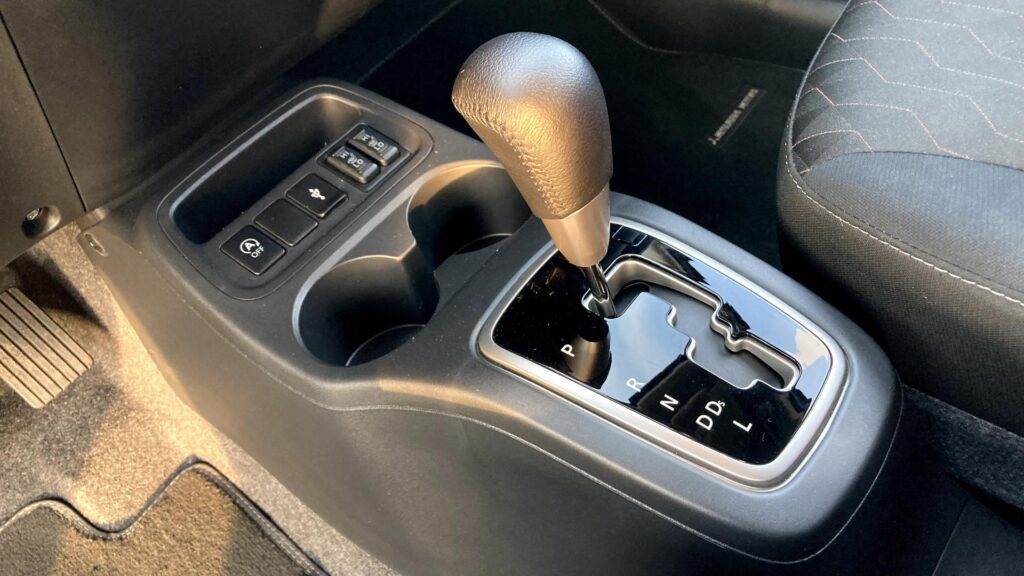
A small turning radius and large stops make it easier to maneuver in built-up areas, and you can turn on practically any wide road in the opposite direction. Slower swimming through the city is carried on a wave of comfort, peace and view. The suspension of the wheels copes a little worse with larger bumps, potholes or bumps, especially at higher speeds. The steering is light and smooth, but with a lot of play around the center position and rubber resistance when turning the steering wheel more. When driving faster, I had to correct the position of the steering wheel in almost every sharp turn. The body leans a little more, but at least it reminds the driver that this, despite the “Sport” sticker on the trunk door, is not a racing car.
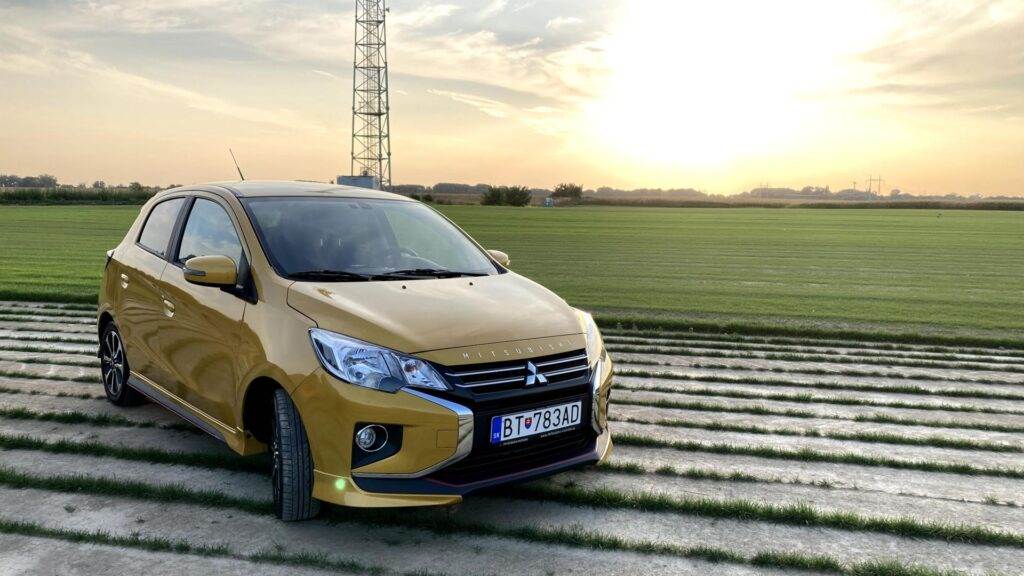
For a price starting at €8,990 (the currently tested model with all extras is priced at €15,580), you get an honest little car that will gratefully and long fulfill the tasks of a city car or second car in the family. It’s a small urban box that doesn’t want and doesn’t intend to play with modern technological achievements. Space Star built on proven foundations, a simple and robust classic in the form of an engine that promises very low operating and service costs, and also on the fact that this is practically the only car in the given segment that has an automatic transmission (do not confuse an automatic with a robotic transmission – they are everywhere at the competition).
Technical specifications:
| Make and model | Mitsubishi Space Star 1.2 CVT Intense |
|---|---|
| Number of cylinders/valves | 3/12 |
| Engine displacement (ccm) | 1 199 |
| Max. power (kW (Ps)/rev.) | 59 (80)/6000 |
| Max. torque (Nm/rev.) | 106/4000 |
| Gearbox | CVT – stepless |
| 0-100 km/h (s) | 13.5 |
| Maximum speed (km/h) | 173 |
| Consumption per 100 km (l) | 5.3 (WLTP) |
| Consumption during the test (l) | 6.3 |
| The price of the tested version | from €15,580 |


